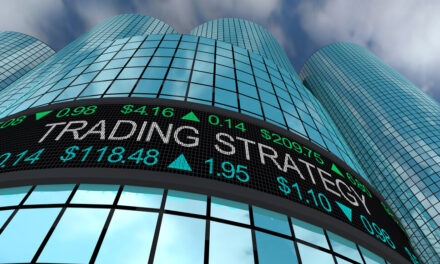Editor’s Note: We’re kicking off our year in review with a sector that is near and dear to Adam O’Dell’s heart. Back in April, he told us why picking sides in the energy sector limits your chances to secure massive profits. We’ve updated his analysis with how that thesis played for two energy ETFs. But the biggest proof lies in one of Adam’s best stock recommendations this year…
The world’s superpowers are waging an all-out war for control of a key strategic asset: energy.
Like all conflicts, we’ve been dragged into this “Energy War” whether we like it or not. But it’s quickly shaping up to be the biggest profit opportunity I’ve seen in my life.
On one side stands the old guard, fossil fuels. Titans of the global supply chain and an indispensable part of our daily life.
On the other stands the small but growing renewable energy sector. While its solutions so far account for a fraction of the world’s energy output, it now has a major tailwind at its back through government funding.
Which side will win? Trick question.
At least for the next several decades … the answer is both.
Anyone choosing to invest in just one side of the energy sector is missing the big picture. Untold billions of dollars are pouring into both industries simultaneously. And the demand for any energy, no matter its source, is accelerating.
Today, I’ll share why I’m not picking sides and am instead investing in both the best fossil fuel AND renewable energy stocks at once.
Understanding the Divide
The first step to profiting as old and new industries clash is to take an honest look at the global energy picture.
The prevailing narrative is that the world is quickly transitioning from fossil fuels to renewable energy. Solar panels, windmills, geothermal and hydroelectric power are the future — and the future is now.
I won’t deny that’s an admirable goal. Who doesn’t want a world without all the environmental damage that comes with fossil fuels?
But that’s the thing. Right now, we’re discussing this goal as if we’ve already achieved it. The reality is, we’re quite far off.
Just take this chart from Our World in Data, which shows that from 2000 to 2021, the energy consumption of oil, coal and natural gas have risen steadily.

Meanwhile, hydropower, wind, solar and other renewables haven’t even come close to catching up.
That’s despite trillions of dollars spent on renewable energy technologies over the same time frame.
This tells me it will take MUCH longer to unwind our dependence on fossil fuel than most anticipate.
The United States’ current stated goal is to be carbon neutral by 2050. That’s almost three decades away! Looking at the progress renewables have made since 2001, it’s going to take some effort to meet that mark.
However, that hasn’t stopped the U.S. from making a strong commitment to renewable energy.
Last year, President Joe Biden invoked the Defense Production Act to devote hundreds of billions of dollars to “accelerate domestic production of clean energy technologies, including solar panel parts.”
The government is getting behind renewable energy in such a big way that Biden used presidential power to make it happen.
This was a big boost for renewable energy stocks. And while they have a long, uphill road to unseat the entrenched king that is fossil fuels, there will be plenty of opportunities to invest in the companies working to do just that.
Remember, we don’t have to pick sides…
The Green Zone Power Ratings System on This Mega Trend
Regular readers of Stock Power Daily know how valuable it is to follow my proprietary Green Zone Power Ratings system.
Companies that rate 81 or above have traditionally outperformed the stock market over the next year.
So how do fossil fuel and renewable energy stocks stack up?
Let’s take a look through the two largest indexes in the market that represent each — the SPDR S&P Oil & Gas Exploration & Production ETF (NYSE: XOP) and the iShares Global Clean Energy ETF (Nasdaq: ICLN).
When I ran these numbers back in April, 36 of 60 holdings in XOP rated a 70 and above — putting them in the “Bullish” or “Strong Bullish” category. These stocks are in a strong position to outperform.
On the flip side, only six of the stocks in XOP rated 39 or below, and the average of all the stocks in the exchange-traded fund was a “Bullish” 71.
Overall, this was a strong position for the oil and gas sector to be in. And it led to a solid 8% gain for XOP year to date.
ICLN contains a lot of foreign holdings — which our Green Zone Power Ratings system filters out. Once we did, 29 total names passed our requirements.
Of those names, just three were “Bullish,” seven rated “Neutral” and 19 rated “Bearish.”
This disparity didn’t surprise me. Renewable energy stocks — like those in ICLN — are relatively new, volatile and hold loftier valuations than the proven fossil fuel energy stocks in XOP.
And those laggards ended up dragging ICLN down by more than 20% this year!
Of course, that’s not going to stop me from looking at the sector.
This is where the Green Zone Power Ratings system comes into play. I have found, and will continue to find, great energy plays at attractive valuations for my readers.
What I’ve found most of all, though, is that the stocks directly playing both sides of the Energy Wars stand to gain the most.
And it led to one of our biggest success stories in Green Zone Fortunes for 2023.
Back in March, I recommended a 99-rated company in my stock research advisory. It was using funds from its established gas business to fund innovative renewable efforts in some of the energy-hungry U.S. markets.
On November 6, we locked in a 109% gain on half the position and are sitting on a 166% open gain for the other half.
This is a slight brag, sure. It’s also proof that picking sides isn’t the way. Green Zone Power Ratings helps us ignore the noise and find the best opportunities.
And I’m not done finding more. If you’re ready to make 2024 an incredible year of investing, click here to get started with Green Zone Fortunes now.
I can’t wait to see you there…
To good profits,

Adam O’Dell
Chief Investment Strategist




